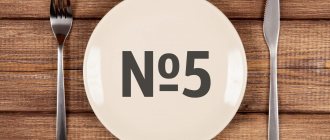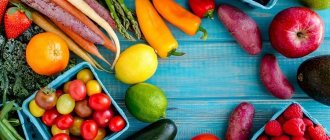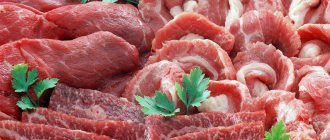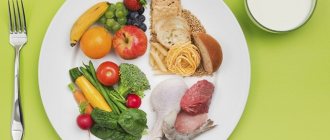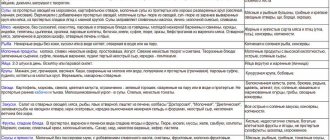Diet table 7 is a diet prescribed for diseases of the excretory system. The diet of diet No. 7 is selected in such a way as to relieve the load on the kidneys. That is why it is prescribed for kidney disease: chronic and acute nephritis.
For chronic nephritis, you must adhere to table 7, unless there are exacerbations. If the nephritis is acute, then the patient is first prescribed treatment menus 7a and 7b. The transition to menu 7 is carried out when there are no acute manifestations of inflammation, and the disease enters the attenuation stage.
The effectiveness of table 7 for nephritis is that such a menu removes excess load from the kidneys. Facilitating the work of the kidneys allows the excretory system to work more efficiently, ridding the body of harmful substances from its vital functions. By using only healthy food and controlling your drinking regime, you can significantly reduce swelling. Thus, just a diet with rules about what is allowed and what is not can help get rid of the disease.
About the principles of diet No. 7
The “Table No. 7” diet is intended, to one degree or another, for all patients with kidney pathologies.
In this case, the principles of dietary nutrition are presented as follows:
- The diet requires a reduction in protein and salt in the diet, which burden already sick kidneys.
- Following a diet every day cleanses the body of nitrogenous substances, swelling is noticeably reduced, and blood pressure is normalized.
- Reduced intake of salt into the body leads to improved blood circulation, which has a positive effect on the condition of the body.
- The menu for each patient is compiled individually, in accordance with existing chronic pathologies.
- The diet is prescribed only after the examination has been completed.
- The main principle of the diet is to reduce the amount of salt - the maximum allowable is 6 g per day. If necessary, the doctor revises the amount provided.
- The menu limits the consumption of carbohydrates - complex and simple, as well as water. It is allowed to drink no more than 1 liter of clean water per day.
- It is important to adhere to the daily caloric intake: it varies from 2200 to 3000 kcal, which depends on the person’s weight. If you are overweight, you can reduce your caloric intake during the restrictions. Every day you are allowed to consume carbohydrates up to 450 g and lipids up to 90 g. Lipids are fats, of the indicated amount a quarter is allocated to vegetable fats.
All products on the “Table No. 7” diet menu undergo heat treatment without adding salt or other seasonings. Meat and fish for preparing second courses are first boiled in water, and only then subjected to another type of heat treatment.
Video
Table Features 7
To reduce the burden on your kidneys, you need to change your diet and stick to a specific diet. To do this, limit protein foods to 60-70 grams of protein per day (this means that the patient can eat 150 grams of meat or fish). Fats and carbohydrates are consumed in physiologically necessary quantities - 80 grams and 400 grams, respectively. Caloric content of the diet – 2500 cal.
It is important to say about the drinking regime: you need to drink up to 1 liter of liquid per day. All liquids are taken into account here, namely soups, drinks and water. The amount of water is very important in nephritis, as it puts additional stress on the body's excretory system.
The amount of salt is limited: you can consume no more than 6 grams of salt. In order to control the amount of salt, it is necessary to salt the dish already prepared on the plate. It is necessary to allocate the allowed amount every day so that the patient has the opportunity to regulate the process of adding salt to food.
What is limited in this diet? As with all therapeutic diets, alcoholic and carbonated drinks, spicy, overcooked, salty, smoked foods are prohibited. Food should be as simple and healthy as possible.
What is allowed to be consumed
Treatment table number 7 includes a list of prohibited and permitted products that are presented in the table.
| Products | What can you eat | What not to eat |
| Bread and flour | Salt-free bread. Yeast pancakes without salt | Regular bread. Baking with salt |
| Meat and poultry | Low-fat varieties: veal, rabbit, turkey, chicken | Fatty meats and poultry. Fried, stewed, smoked, salted meat and poultry. Sausages. Canned food |
| Fish | Low-fat varieties: hake, blue whiting, silver carp | Fatty fish. Salted, smoked fish. Canned food. Caviar |
| Dairy | Almost all dairy dishes and fermented milk drinks are allowed | Cheeses |
| Eggs | Up to 2 eggs per day (with limitation of other protein products) soft-boiled or in the form of an omelet | |
| Cereals | All types of cereals. Pasta | Legumes |
| Soups | Soups with vegetable broths | Broths: meat, fish, mushroom, legumes |
| Vegetables | Almost all vegetables are raw and cooked | Onions, garlic, radishes, spinach, sorrel. Mushrooms. Salted, pickled, pickled vegetables |
| Fruits | All fruits | |
| Dessert | Jelly, fruit ice cream, honey, jelly, jam, candy | Chocolate |
| Beverages | Weak coffee, teas. Juices from fruits and vegetables | Strong coffee, cocoa. Salty mineral water |
The presented diet is also suitable for pregnant women who have been diagnosed with gestosis, a dangerous disease that can be fatal for the mother. They also need to stop consuming large amounts of salt and spices, since in their interesting position all internal organs are loaded and work twice as hard every day.
Video
Ten Diet Goals Number 7
- Diet table number 7 is prescribed to ensure the most gentle regime for kidney function. During the diet, the kidneys get the opportunity to restore their structure, eliminate damage caused by the disease and accumulate enough strength for subsequent work.
- Diet number 7 allows you to remove toxins from the organs that destroy kidney tissue, and cleanse the tubules of decay products and toxins. Thanks to the diet, the performance of not only the kidneys increases, but also those organs whose work depends on the proper functioning of the excretory systems.
- The patient's general condition improves, his performance is restored.
- Edema, which is a common accompaniment of renal failure, is reduced, and diuresis (urine excretion) is increased.
- The ability of the kidneys to clear fluids and form and excrete urine is restored.
- The load on the cardiovascular system is reduced, which, in conditions of excess fluid in the body, is forced to work at an increased rhythm.
- Blood pressure decreases and accompanying symptoms of illness disappear.
- The renal blood supply improves, and, as a result, the nutrition of the kidney cells is improved.
- Nitrogenous substances and other toxic elements are removed from the body.
- Water-salt and acid-base balance are restored.
Watch the program with Elena Malysheva, which talks about which foods are harmful to the kidneys:
Menu for the week
An approximate menu for the seventh table for the week is offered - a choice of 2 options for the daily diet, which can be formed and altered in accordance with the doctor’s recommendations on an individual basis.
| Meal time | Diet |
| Option 1 | |
| Breakfast | Pumpkin-millet porridge with milk and butter, steam omelette of 2 quail eggs, drink made from chicory root powder with sugar |
| Lunch | Baked apple with honey and cinnamon |
| Dinner | Vegetable soup in water (cauliflower, zucchini, potatoes, carrots), a portion of durum wheat pasta, boiled lean veal (50 g), vinaigrette without pickles, berry jelly |
| Afternoon snack | Fruit jelly, rosehip drink |
| Dinner | Salad of fresh cabbage and cucumbers, dressed with flaxseed oil, a slice of salt-free bread with butter, cottage cheese casserole with berry sauce or strawberry jam, a glass of apple-plum juice diluted with clean water in half |
| Late dinner | Galette cookies (2 pcs.), a glass of natural low-fat yogurt |
| Option 2 | |
| Breakfast | Milk rice porridge with butter, a slice of unsalted bread, tea with sugar and condensed milk |
| Lunch | Fruit puree made from plum, banana and mango (or other fresh fruit) |
| Dinner | Puree potato soup with broccoli and carrots, steamed pollock or hake fillet soufflé, zucchini stewed in cream sauce, grated boiled beets with pumpkin oil, dried prune compote |
| Afternoon snack | Cottage cheese with berries, tea |
| Dinner | Dumplings with cottage cheese (use second grade flour), topped with kefir and rosehip syrup, chamomile tea with honey |
| Late dinner | Bio-yogurt (glass) |
It is recommended to use special recipes designed for preparing dishes according to diet number seven. They will help diversify the menu, but only with the permission of the attending physician (especially during an exacerbation of the disease).
Table of composition of diet number 7 for a day
| Name of substance | Quantity in grams | Notes |
| Squirrels | 80 | 50% plant origin |
| Fats | 80-90 | 30% plant origin |
| Carbohydrates | 350-400 | mostly fruits and vegetables |
| Phosphorus | 1,6 | |
| Sodium | 2,3 | |
| Iron | 0,06 | |
| Calcium | 1,0 | |
| Magnesium | 0,4 | |
| Potassium | 4,4 | |
| Vitamin A | 0.3 mg | retinol |
| Carotene | 8.5 mg | |
| Vitamin B1 | 1.7 mg | thiamine |
| A nicotinic acid | 20mg | |
| Vitamin C | 150mg | ascorbic acid |
| Riboflavin | 2.5 mg |
Daily calorie content should not exceed 2500 kcal. The amount of table salt is no more than 5g.
How to get used to eating without salt
A diet without salt makes many people despondent, because unsalted foods seem tasteless and food literally “doesn’t fit into your mouth.” But a person can get used to anything, especially if he knows some tricks.
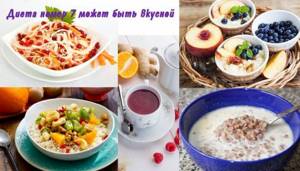
Some dishes actually taste even better when prepared without salt. It's all about habit and your attitude. Try replacing salt with some seasonings that are acceptable on diet No. 7. You can season dishes with lemon juice, coriander, cinnamon, herbs, vinegar, etc.
- buckwheat without salt tastes very pleasant if seasoned with oil without salt;
- You can eat rice without salt; you can eat it in the form of milk porridge or fruit pilaf;
- cabbage without salt is also tasty if supplemented with grated carrots or cranberries;
- any porridge without salt can be prepared with the addition of berries or dried fruits.
It is worth remembering that every day without salt helps your kidneys recover, improves overall well-being, helps remove excess fluid and facilitates the functioning of many other organs and systems.
Tip: if you absolutely cannot do without salt, try adding chopped seaweed, which has a salty taste, to your dishes.
Subspecies of the main diet
Diet No. 7 is developed by nutritionists and attending physicians who take into account nutritional characteristics in accordance with the diagnosed disease. As already described above, there are two main subtypes of nutrition - 7a and 7b. The diet of each of them is prescribed after the examination, as well as in accordance with concomitant diseases.
| Subspecies | Disease |
| №7 | acute nephritis or glomerulonephritis after 3-4 weeks of treatment, chronic nephritis in remission, nephropathy in pregnancy, hypertension with a tendency to edema, obesity and metabolic disorders |
| No. 7a | acute forms of nephritis or glomerulonephritis in moderate or severe form, chronic glomerulonephritis with renal failure |
| No. 7b | mild forms of acute glomerulonephritis, as well as after diet number 7a, exacerbation of chronic glomerulonephritis |
| No. 7v | chronic kidney disease, nephrotic syndrome |
| No. 7g | in the thermal stage of failure or complete loss of kidney function (when prescribing hemodialysis or kidney transplantation) |
Table 7 nutrition is prescribed primarily to reduce a person’s consumption of salt, which negatively affects kidney function. In the presence of such pathologies, the patient needs to take his health seriously and give up salty foods, as well as dishes with a high content of spices.
Video
Following a diet helps cure the disease and maintain health at the proper level. Some people use the “Table No. 7” diet for weight loss, which is also beneficial for the general condition of the body.
Basic rules of nutrition for kidney disease
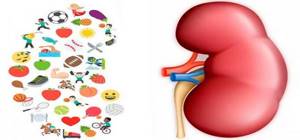
Diet table 7 - nutrition rules
To slow down the development of the disease, you need to limit the amount of protein, which will be less likely to enter the urine and clog the kidney tubules. The total amount can be reduced (up to 0.6 g/kg) by replacing low-value protein with high-value protein (for example, when plant protein is changed to animal protein), or by including essential amino acids and keto acids in the diet.
It is constantly necessary to correct protein when glomerular filtration decreases to less than 40 - 50 ml/min, in nephrotic syndrome, when a lot of protein is lost with massive proteinuria. Of the amino acids, carnitine is prescribed with food, which improves performance, muscle strength and reduces the risk of cardiac complications.
It is very important to limit phosphorus in the diet in the form of phosphates. As you know, proteins, cheese, fish and eggs are richest in phosphorus. If you do not monitor the phosphorus concentration, nephrogenic osteopathies and disturbances in the functioning of the parathyroid glands may develop.
Unsaturated fatty acids found in fish oil are also useful for kidney diseases. They promote vasodilation, reduce blood viscosity and prevent the proliferation of connective tissue in the renal cortex.
Regarding energy requirements, the diet should have the same amount of calories as normal, healthy people - about 37 kcal per kg of weight in middle-aged patients who are not engaged in heavy physical activity.
Carbohydrates should be unrefined so that the body “works” on their absorption, and fats should make up 30% of the daily caloric intake.
The cornerstone of the renal diet is the restriction of table salt and free fluid in the diet, as this can lead to edema and decompensation of a stable course of the disease. Typically, the amount of liquid should not exceed the loss by more than 0.5 liters.
You also need to watch your sources of potassium. In the case of taking diuretics that do not conserve potassium, it is necessary to prevent hypokalemia and convulsive syndrome, and with a pronounced decrease in glomerular filtration, potassium must, on the contrary, be limited. This can be achieved by boiling or soaking foods.
Recipes for delicious dietary dishes
Many patients associate a balanced diet with eating healthy but tasteless food. In fact, the Diet 7 menu for kidney disease can be supplemented with almost any dishes from permitted products. The more varied the diet, the lower the likelihood of hypovitaminosis.
Nephrologists advise diversifying your kidney table with the following dishes:
- Borscht with prunes. 3-4 potatoes are peeled and cut into cubes. Boil in a saucepan until done. They send them fried onions and beets. Boil the prunes in a separate pan, then chop them and add them to the borscht along with shredded cabbage. Boil over low heat for another 4-5 minutes.
- Pilaf with fruits. 2 large carrots are chopped on a coarse grater. Fry in olive oil. 1 glass of white rice with 50 g of raisins and dried apricots, pour 1 liter of water and cook over low heat for 45 minutes. Add some chopped walnuts to the ready-made pilaf.
- Casserole. ½ kg pumpkin and 3 apples cut into cubes. Transfer to baking dishes and place in the oven for 15-20 minutes. Add a little butter, cinnamon and honey to the finished casserole.
During pregnancy, menu table 7 is adjusted taking into account the severity of toxicosis. To prevent water and electrolyte imbalance, include more fruits and foods with calcium in your diet.
The diet for kidney disease meets the requirements of table No. 7 according to Pevzner. It has several options, designated by the letters a, b, c, d. The main purpose of the treatment table is to spare the kidneys and restore the functioning of the urinary system. When illnesses recur, they adhere to a more strict diet 7a, and after feeling better, they return to the basic nutrition system.
Prohibited foods
Restrictions primarily concern salt, spicy and fatty foods.
In this sense, Diet 7 is similar to many other diets that are used for diseases of the gastrointestinal tract, liver, metabolic disorders, etc.
The following products are prohibited:
- meat, fish soups, decoctions of mushrooms or any types of legumes;
- store-bought baked goods (due to their high salt content), including bread;
- fatty meat, sausages, frankfurters, all types of smoked meats;
- cheese (except for homemade cheese, the production of which does not use salt);
- onions, garlic, sorrel, spinach and herbs containing essential oils;
- caviar, canned and dried fish;
- chocolate and all its derivatives, as well as cocoa;
- mustard, horseradish, chili pepper, other hot spices;
- animal fats, margarine and lard;
- coffee, strong tea and alcohol.
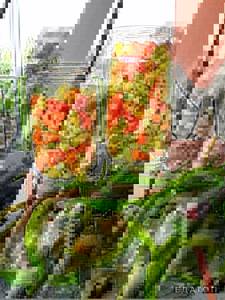
The main prohibition concerns salt in its pure form, as well as salt-containing products.
The list of prohibited foods is not so long, but many patients find it difficult to completely give up salt.
Reviews from patients indicate that after a month of diet, addiction develops and in the future the taste of salt may even become repulsive.

